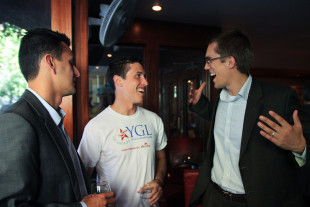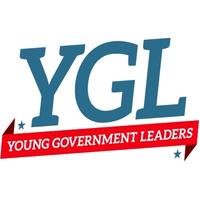
Younger Employees Finding their Place in Federal Workforce
August 7, 2010 | By Lisa Rein
Published on Washington Post
Here are some lessons Spencer Clark has learned in three years working for the federal government:
When he goes to boring meetings, he sits at the table so no one will think he’s a slacker. He knows when to keep his mouth shut. He’s not the best thing since sliced bread. Baby boomers have a lot to offer, even if they drive him crazy.
The earnest 27-year-old with a goatee who bikes with his laptop to his job administering the Paperwork Reduction Act for the Environmental Protection Agency is helping to rescript one of the oldest cliches in Washington. A new movement is shaking up the federal bureaucracy, as an expanding pool of idealistic, results-oriented Gen X and Yers challenges the predictability and authority-driven rules of the World War II generation and the pay-your-dues baby boomers who followed.
Many of the younger workers are arriving in a hiring spree. The Obama administration hopes to fill 50,000 to 60,000 entry-level jobs in the next year, the largest burst since the Kennedy era. The administration is creating positions in security, public health, defense — and is pushing many jobs held by outside contractors inside the government.
The pipeline at the entry and mid-levels is opening fast as close to half a million baby boomers and older workers head out the door in the next four years.
After watching government responses to such crises as Hurricane Katrina and the Gulf of Mexico oil spill, this new crop of federal workers wants to do better. Almost one in three of the 142,690 federal workers hired last year was 29 or younger, while more than one in four were between 30 and 39, a demographic that’s reshaping the bureaucracy — and creating tension and opportunity along the way.
In 10 years, about 400,000 of the 2 million federal workers will be younger than 35, government personnel experts say.
With private-sector job prospects for college graduates at their bleakest in years, government leaders see a window to attract new talent, as well as compete with Teach for America and the Peace Corps for the service-minded.
Seeking risk
For all their bravado, today’s young feds know they are following a Great Society generation that nurtured programs such as Medicare and Medicaid, sent the first man to the moon, and gave birth to the very agency Clark bikes to every morning. They know, too, that those baby boomers, a generation with their own sense of mission, will take expertise and institutional memory with them when they go.
Young workers are restless for risk. They don’t want to be GS-9s forever. They expect to be consulted and engaged — no head-down, it-has-always-worked-this-way chain of command here. They’re digital natives, too, who want to manage acquisition contracts on Twitter and who think crowd sourcing and cloud computing are the future of customer service. “Sure, I deal with a lot of bureaucratic drudgery,” said Clark, whose first job in government was shelving library books in high school. “But I came here because of the mission.”
His job is to help reduce the burden of paperwork on the public. He was working for a labor union and fresh off two years as a missionary in France after college when the EPA called three years ago. Clark likes the agency’s mission “to protect human health and the environment.”
These are many of the young people who sent Barack Obama to the White House, where the president has repeated John F. Kennedy’s call to service from 49 years ago and pledged to make working for the government cool again.
“We’ve seen incompetence in government and we want to fix it,” said Timothy Sommella, 31, a Coast Guard officer with a degree from Harvard’s Kennedy School and six years at sea, now on detail as a program reviewer in the budget office.
“Our parents talked about calling the DMV and being frustrated,” he said. “Government doesn’t have be the DMV.” With a young wife now overseeing an oil cleanup crew in the Gulf of Mexico and no kids, Sommella channels his after-hours energy into heading Young Government Leaders, a professional group founded in 2003. It has grown to six chapters — from Richmond to Denver — with 1,800 members.
Facebook for feds
The younger generation converses on a type of Facebook for feds, started by a 28-year-old IT worker at the Homeland Security Department. Steve Ressler sent his idea for an online community to five friends one night after work in June 2008. GovLoop blossomed so fast that a private company snapped up the site last year. Membership for the part water cooler, part chat room site just hit 32,000.
“Government’s different now,” said Ressler, who now runs GovLoop full time. “Why shouldn’t citizens be able to report emergencies on Twitter? Or take a picture of a pothole on their cellphone?”
Networking is a personal career-builder but also a way the younger generation thinks agencies should work: emerge from their silos and share ideas.
“They’re very results-driven and they demand feedback,” said John Berry, the government’s personnel chief. “They often find some of the traditional roles constricting. They say, ‘Why can’t I wear flip-flops to work?’ I’ve told them, ‘I don’t care what you wear, as long as you don’t have a meeting at the White House.’ ”
Berry assigned a 27-year-old special adviser with a Stanford MBA to develop a strategy to recruit college students to government. Matt Collier pulled in a group representing agencies from the State Department to the IRS. Berry quickly dubbed it the “Cool Team.” Part of the mission is to retain young workers.
At 51, Berry understands that the young guns and the boomers can rankle one another. “We like to work mostly by ourselves,” he said. “They want to know, ‘How am I doing?’ The old folks are not used to being pestered every day for feedback.”
With clerical jobs being replaced by technology, today’s young feds are more educated and a little older than their predecessors were — with an average age of 34 now, up from 31 in 1990 — personnel experts say. They’ve got graduate degrees, nonprofit experience and military service on their résumés. Some say they’ve made a difference just by showing older colleagues quicker ways to do things.
Before his colleagues would submit paperwork-reduction strategies for approval, “they’d give me a whole packet of stuff when I needed a fraction of it,” Clark said. Now he’s revising the EPA’s internal system to speed up the process. For improving efficiency, he got a “Splash” award from the Department of Water.
Some might call his job the epitome of bureaucracy. But Clark calls it the “churning of the internal cogs of government to serve the public interest.”
‘Part of the team’
Serving the public interest at times has seemed like waiting in line for some. As a management analyst for an Agriculture Department program that gives farmers conservation incentives, Rebecca Roggenbuck often finds herself making copies instead of working up allocation formulas for states. “You want to be part of the team, not the copy girl,” said the 28-year-old agri-scientist from tiny Harbor Beach, Mich. She came from a farm family and decided on a government career in agriculture. She’s pursuing a master’s degree at night and has worked her way up to a GS-13. And she has had to learn patience: “Your first instinct is you want to run everything and make it your own. But you have to learn your place respectfully.”
The Next Gen movement reached a milestone last month, a two-day summit in Arlington that drew 250 workers.
It was a hothouse benefiting a Google conference, as young feds and their mentors opined on Getting Your Geek On (mastering tech tools), Project Management 101 (the real story on getting things done) and Managing Up (influence without authority). They exchanged e-mail addresses and Twitter handles on white MingleSticks dangling from their lanyards.
Mostly they got inspiration. Collier was the rock star who told his audience to be patient but persistent and learn from senior leaders. “They’ve probably tried it and hit the same walls.”
Clark brought his own PowerPoint on networking, urging everyone to “use lunch to transform your agency and your career.”
The generation gap was a big concern. “How do you deal with comments from managers such as ‘I was born in 1962’ and people referring to me as a ‘tween?” Keisha Forde, a program analyst at the Transportation Security Administration, asked during one session.
Sunny Hester, director of human capital for the Department of Human Services and a boomer, told Forde that patient communication is critical.
“The biggest change is the questioning of the status quo,” said Hester, who finds the impatience of her younger colleagues refreshing. She has become something of a cheerleader and coach who embraces their enthusiasm while reminding them to use proper English in e-mails and that the world once survived on carbon paper and faxes.
“The phone would ring,” she said. “You put the paper into a cylinder. You wait for the modem to transmit at six minutes a page. It was rocket science.”

